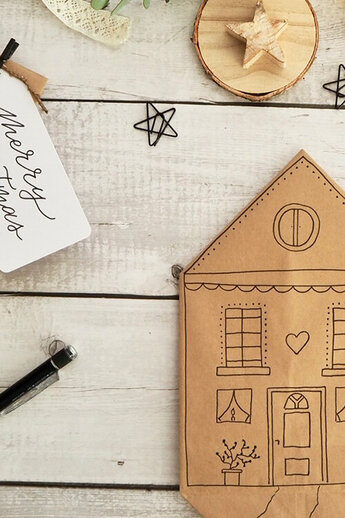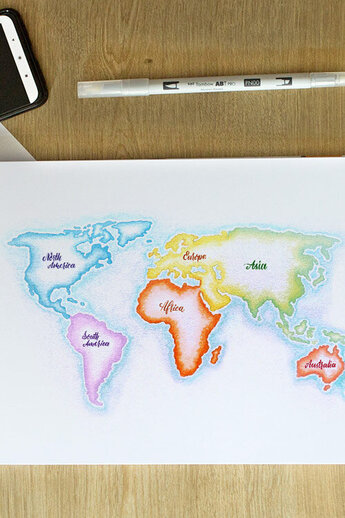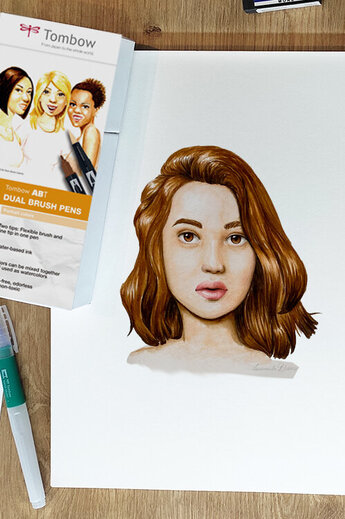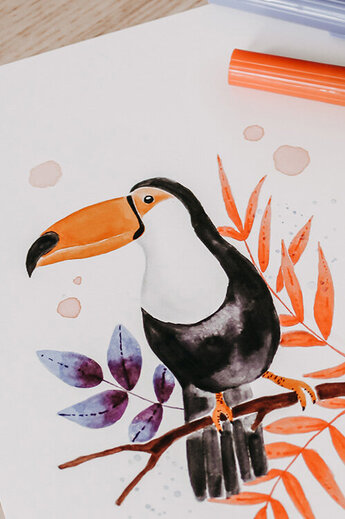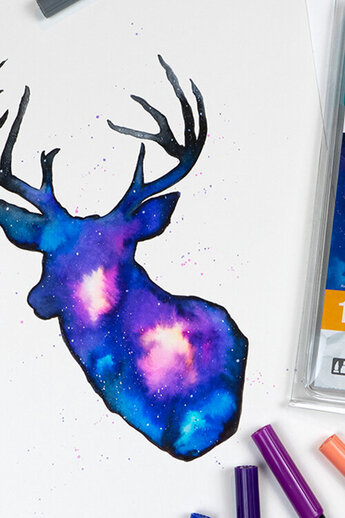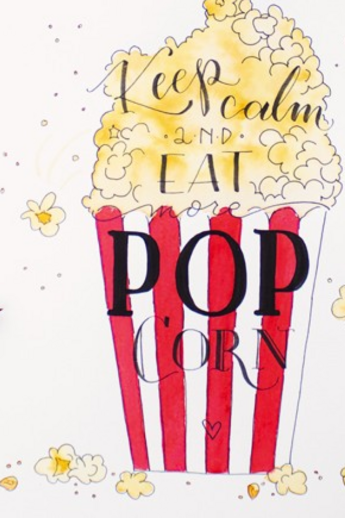How to paint a galaxy with salt and rice
Infinite vastness. Starry skies. With ABT Dual Brush Pens, you can create your own galaxy in just a few steps. For this, you won’t need any unusual materials, but rather simple household items such as salt or rice.
Melanie from Süßholzdesign will explain step-by-step how you can mimic impressive watercoloring effects to create your own galaxy.

You will need these materials:
Materials needed for your galaxy picture:
- ABT Dual Brush Pens in different colors, such as
- ABT-493 reflex blue
- ABT-606 violet
- ABT-569 jet blue
- ABT-676 royal purple
- ABT-725 rhodamine red
- ABT-815 cherry
- ABT-131 lemon lime
- ABT-055 process yellow
- Watercolor paper
- A brush and water or a water brush
- Blending pallet or porcelain plate
- Masking tape or washi tape
- Rice and salt
Materials needed for the lettering:
- A pencil such as the MONO 100
- Fudenosuke
You still need some of it?
Preparation
Mask off your drawing area using masking tape or washi tape. This will give your galaxy straight edges at the end.
Tip: Check in advance if the adhesive tape can be removed without damaging the paper.
You can now apply the paint for your galaxy on the blending palette or the porcelain plate. I used ABT-493, ABT-606, ABT-569, ABT-676,ABT-725, ABT-815; ABT-131 und ABT-055 for this.
Now let’s get started.
Step 1: The background
First, prime the surface with water and spread the paint from the blending palette or porcelain plate onto the wet surface by carefully dabbing it with the brush. You’ll see right away how the paint spreads naturally in the water. This watercolor technique is called the wet-on-wet (or ‘alla prima’) technique and it is particularly suitable for flowing, uncontrolled backgrounds.
Tip: If an area gets too dark, you can lighten it up again with a little water.

Step 2: Paint splatters
The wet surface is then decorated with additional paint splatters. To do this, you can simply tap the ABT Dual Brush Pen against a second pen to create fine paint splatters.

Depending on your preference, you can use salt in different grains or rice for watercoloring effects. The amount of water as well as the amount of salt decide on the result. A lot of water and a lot of salt take away so much water and color pigment from your picture that only around the grains of salt an intensive edge will stay. If you use the salt sparingly, you will get white spots with a smaller dark centre. It would be better to test it on your own first so that you get a feeling for the right amount and the desired effect.
Step 3: The salt effect
Now sprinkle the salt in the paint while it’s still wet. In addition to conventional table salt, you can also use coarse salt as well as rice grains, as in our example. Simply try out various effects to find what you like best.
Important: Now let the surface dry thoroughly before removing the grains of salt from the paper using a clean, dry brush.

Step 4: The lettering
After drying, the lettering can be placed over the watercolor background. If you are feeling unsure, draw the lettering lightly first using a pencil and fill it in with a brush pen afterwards!
Done!
Please let us know how helpful this article was for you to copy. You are welcome to write us a message if you have any suggestions for improvement or other feedback for us. We read everything, we promise PS: We are of course also curious about your results. Feel free to show us your work on Instagram or Facebook and share it with the community.








